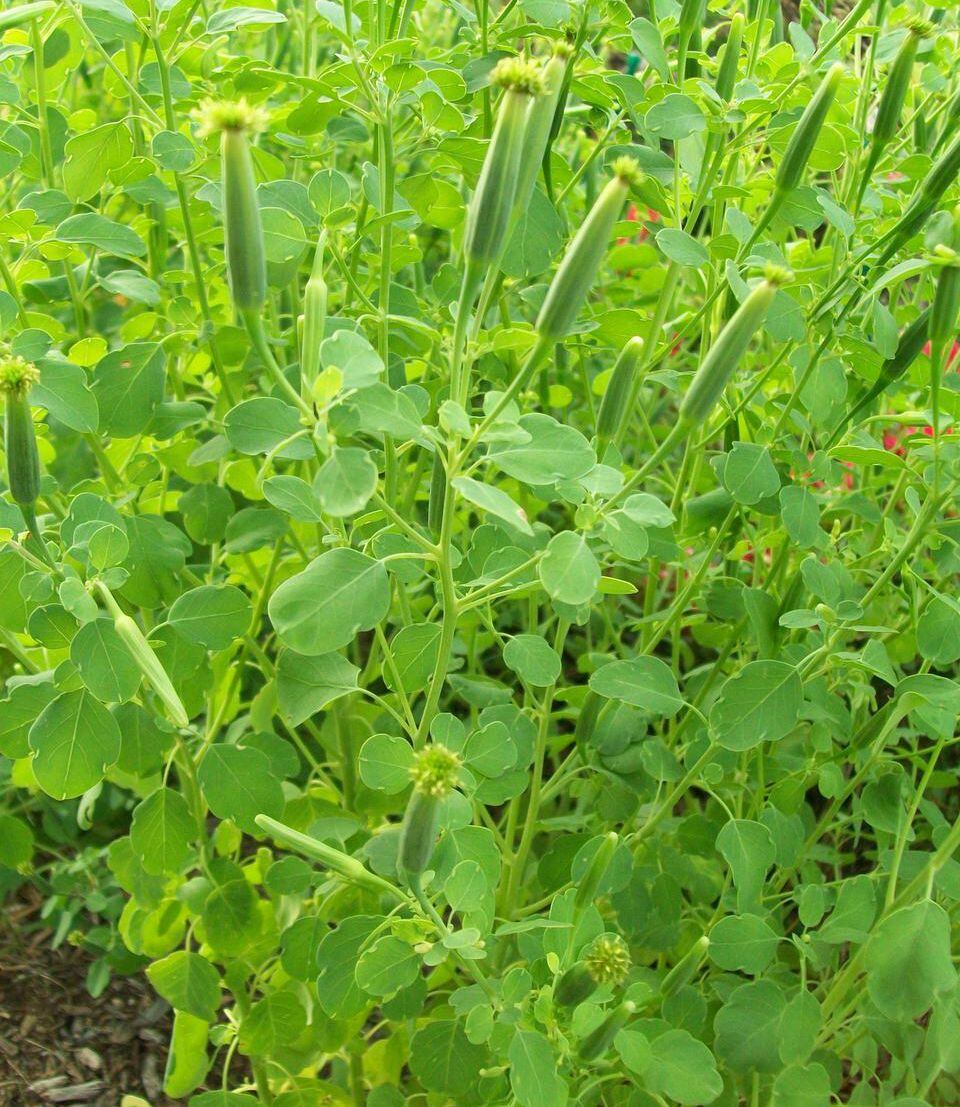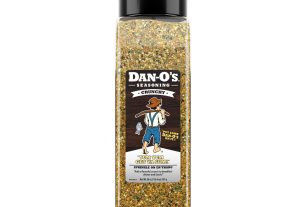Have you ever been in the middle of cooking a mouthwatering recipe, only to realize that you’re out of oregano?
Don’t fret!
There are plenty of substitutes that can still add that delicious herbaceous flavor to your dish.
Whether it’s marjoram, basil, parsley, tarragon, sage, or thyme, these alternatives will surely elevate your culinary creations.
And if you’ve ever wondered about the measurement conversion between dried and fresh oregano, we’ve got you covered.
But wait, there’s more!
The Spice House website offers a treasure trove of recipes featuring different oregano substitutes, from the zesty “Traditional Chili” with Mexican oregano to the delectable “Argentine-style grilled eggplant” with Greek oregano.
So dive in and discover a whole new world of flavors with these captivating oregano substitutes!
oregano substitute
The oregano substitutes include marjoram, basil, parsley, tarragon, sage, and thyme.
The equivalent measurement of dried oregano to fresh oregano is 1 teaspoon dried oregano equals 1 tablespoon fresh oregano.
Italian seasoning can also be used as an alternative to oregano.
Marjoram tastes the most similar to oregano but may require a larger amount in a recipe.
Dried herbs are more potent than fresh herbs.
Basil can be used as an alternative to oregano but has a sweeter taste.
Key Points:
- Oregano substitutes include marjoram, basil, parsley, tarragon, sage, and thyme.
- Equivalent measurement: 1 teaspoon dried oregano = 1 tablespoon fresh oregano.
- Italian seasoning can be used as an alternative to oregano.
- Marjoram tastes most similar to oregano but may require a larger amount in a recipe.
- Dried herbs are more potent than fresh herbs.
- Basil can be used as an alternative to oregano but has a sweeter taste.
oregano substitute – Watch Video
💡
Pro Tips:
1. Oregano can be substituted with marjoram in most recipes. Marjoram shares a similar taste and aroma, making it a suitable alternative for those who may not have oregano on hand.
2. In ancient times, oregano was considered a symbol of happiness by the Greeks and Romans. It was often used in wedding ceremonies to bring joy and good fortune to the couple.
3. Oregano is rich in antioxidants, which help protect the body against harmful free radicals. It has one of the highest antioxidant levels among all culinary herbs.
4. During the Middle Ages, oregano was used as a remedy for a variety of ailments, including respiratory conditions, digestive issues, and infections. Its medicinal properties were highly valued and widely recognized.
5. Oregano has been used as a natural insect repellent throughout history. Its strong scent can help keep pests like mosquitoes, flies, and ants away, making it a useful addition to outdoor gatherings or picnics.
Oregano Substitutes
When a recipe calls for oregano and you don’t have this aromatic herb on hand, there are several substitutes you can use to replicate its flavor. Here are some popular options:
-
Marjoram: Marjoram is perhaps the closest substitute to oregano in terms of taste. It belongs to the same family as oregano and has a similar savory and slightly sweet flavor. However, marjoram is milder, so you may need to use a larger amount to achieve the same intensity of flavor.
-
Basil: While basil has a sweeter taste compared to oregano, it can still be used as an alternative. It adds a fresh and aromatic note to dishes, making it a great option for Italian and Mediterranean cuisine.
-
Parsley: Although parsley has a different flavor profile from oregano, it can be used as a substitute in some recipes. Parsley has a mild and slightly peppery taste, which can complement other herbs and spices in a dish.
-
Tarragon: With its unique anise-like flavor, tarragon is an intriguing substitute for oregano. It is commonly used in French cuisine and pairs well with fish, poultry, and vegetables.
-
Sage: Sage has a strong and earthy flavor that can work as a substitute for oregano in some recipes. However, it is more pungent, so use it sparingly to avoid overpowering other ingredients in the dish.
-
Thyme: Thyme shares a similar earthy and slightly minty taste to oregano, making it a suitable substitute in many recipes. It is especially delicious in meat and vegetable dishes.
Marjoram As A Substitute For Oregano
Marjoram, which belongs to the mint family, is considered the best substitute for oregano due to their similar flavor profiles. It offers a slightly sweeter taste, but this can be easily balanced by using a slightly larger amount in your recipe. Marjoram is especially suitable for Italian and Mediterranean dishes, as it adds a fragrant and savory touch to sauces, soups, and salads. Experimenting with marjoram can bring a unique twist to your culinary creations.
Basil As A Substitute For Oregano
Known for its strong aroma and sweet flavor, basil is an excellent substitute for oregano. Although it doesn’t have the same savory notes, it can provide a fresh and vibrant taste to your dishes.
- Basil is often used in Italian cuisine, so it pairs well with tomatoes, pasta, and pizza.
- Consider using fresh basil leaves, as they offer a more pronounced flavor than dried basil.
“Basil adds a delightful burst of freshness to your meals.”
Parsley As A Substitute For Oregano
While parsley may not have the same distinctive flavor as oregano, it can still be a suitable substitute in certain recipes. It has a mild and slightly peppery taste that complements other herbs and spices. Parsley is commonly used as a garnish, but it can also enhance the flavor of soups, stews, and sauces. Consider using it in combination with other herbs to replicate the complexity of oregano.
–Parsley has a mild and slightly peppery taste
–Can be used as a garnish or to enhance the flavor of soups, stews, and sauces
–Combine with other herbs for a more complex flavor
“Parsley may not have the same distinctive flavor as oregano, but it can still be a suitable substitute in certain recipes.”
Tarragon As A Substitute For Oregano
Tarragon, with its distinctive anise-like flavor, offers a unique alternative to oregano. This herb, commonly used in French cuisine, can provide a subtle and refreshing taste to your dishes. It pairs well with fish, poultry, and vegetables. However, due to its unique flavor, it may not work in all recipes that call for oregano.
Some key points about tarragon:
- Distinctive anise-like flavor
- Commonly used in French cuisine
- Subtle and refreshing taste
- Pairs well with fish, poultry, and vegetables
Remember to adjust the amount of tarragon used based on personal preference and the specific recipe. As bold and italics help to highlight important information, it’s important to keep in mind that tarragon’s flavor may not be suitable for all dishes that traditionally call for oregano.
Sage As A Substitute For Oregano
Sage, known for its earthy and slightly bitter taste, can also be used as a substitute for oregano. It has a more pungent flavor, so it’s important to use it sparingly to avoid overpowering your dish. Sage is commonly used in traditional European dishes, particularly with poultry and stuffing. Its bold flavor can add depth and complexity to your recipes.
Thyme As A Substitute For Oregano
Thyme is an excellent substitute for oregano, offering an earthy and slightly minty flavor. This versatile herb complements a variety of savory dishes, enhancing them with its distinct and aromatic taste. Adding thyme to meat and vegetable dishes creates a delicious flavor combination. For a unique twist, consider using equal parts thyme and oregano.
Equivalent Measurement Of Dried Oregano To Fresh Oregano
When substituting dried oregano with fresh oregano, keep in mind that the intensity of flavors differs between the two forms. The general rule is that 1 teaspoon of dried oregano is equivalent to 1 tablespoon of fresh oregano. This conversion ensures that you maintain the intended flavor profile, regardless of which form of oregano you use in your recipe. Adjust the measurements accordingly to suit your taste preferences.
Using Italian Seasoning As An Alternative To Oregano
If you don’t have any oregano on hand, another viable substitute is Italian seasoning. This blend typically includes a combination of herbs like oregano, basil, thyme, and rosemary, among others. The precise composition may vary, but it often provides a flavorful alternative when oregano is unavailable. However, keep in mind that the overall taste may differ slightly, as Italian seasoning contains a mixture of herbs rather than a single herb.
Tips For Using Oregano Substitutes Effectively
When using oregano substitutes, it’s essential to consider the individual flavors and potency of each herb. Here are some tips to help you effectively replace oregano in your recipes:
-
Start with smaller amounts: Since each substitute has a slightly different flavor profile, begin with a smaller quantity and adjust according to your taste preferences. You can gradually increase the amount until you achieve the desired flavor.
-
Experiment with combinations: Don’t hesitate to combine different herbs to replicate oregano’s complexity. For example, using a combination of marjoram, basil, and thyme can create a unique flavor profile reminiscent of oregano.
-
Consider the cuisine: Each substitute may work better in certain cuisines than others. For instance, marjoram and basil are commonly used in Italian cuisine, while tarragon is prominent in French cooking. Consider the overall flavor profile of the dish to decide on the most suitable substitute.
-
Balance other flavors: Adjust the other herbs, spices, and seasonings in your recipe to accommodate the substitution. Some substitutes may have a stronger or milder flavor, which could affect the overall balance of your dish.
Oregano substitutes offer a range of options to enhance your culinary creations when this versatile herb is not available. Whether it’s the similar taste of marjoram or the refreshing notes of basil, each alternative has its own unique contribution. Experimenting with these substitutes can elevate your dishes and allow for endless creativity in the kitchen.
- Start with smaller amounts
- Experiment with combinations
- Consider the cuisine
- Balance other flavors
💡
You may need to know these questions about oregano substitute
What herb is closest to oregano?
The herb that is closest to oregano is marjoram. Marjoram is a member of the same family as oregano and has a similar flavor profile. It is often considered a milder version of oregano and can be used as a substitute in many recipes. Whether you’re using it as a seasoning or a garnish, marjoram can be a great alternative to oregano.
Can I substitute oregano for Italian seasoning?
Yes, you can substitute oregano for Italian seasoning, as oregano is one of the key ingredients in Italian seasoning. Italian seasoning usually consists of a mix of herbs such as oregano, basil, thyme, and rosemary. By using oregano as a substitute, you can still achieve the distinct flavor profile associated with Italian cuisine. However, if you have access to other fresh herbs such as basil, thyme, or rosemary, combining them with oregano can create a more complex and flavorful substitute for Italian seasoning, enhancing the overall taste of your dish.
What is a substitute for oregano in pasta salad?
An alternative to oregano in pasta salad could be thyme. With its earthy and slightly minty taste, thyme can provide a delicate and flavorful addition to the dish. Its versatility allows it to blend well with various ingredients and provide a refreshing twist to the overall flavor profile of the salad. Additionally, thyme is commonly used in Mediterranean and Italian cuisines, making it a suitable substitute for oregano in this context.
Is sage a substitute for oregano?
While sage can provide a unique flavor profile with its bitter-sweet and citrusy taste, it may not be the most suitable substitute for oregano. Although both herbs have strong and sharp flavors, oregano has a distinct earthy and slightly spicy taste that sets it apart. However, if you are in dire need of a substitute, sage can add its own interesting twist to the dish while still bringing some herbal notes to the table.
Reference source
https://www.thespicehouse.com/blogs/news/oregano-substitute
https://www.acouplecooks.com/best-oregano-substitute/
https://bitesofwellness.com/italian-seasoning-substitute/
https://kitchenambition.com/oregano-substitute/



